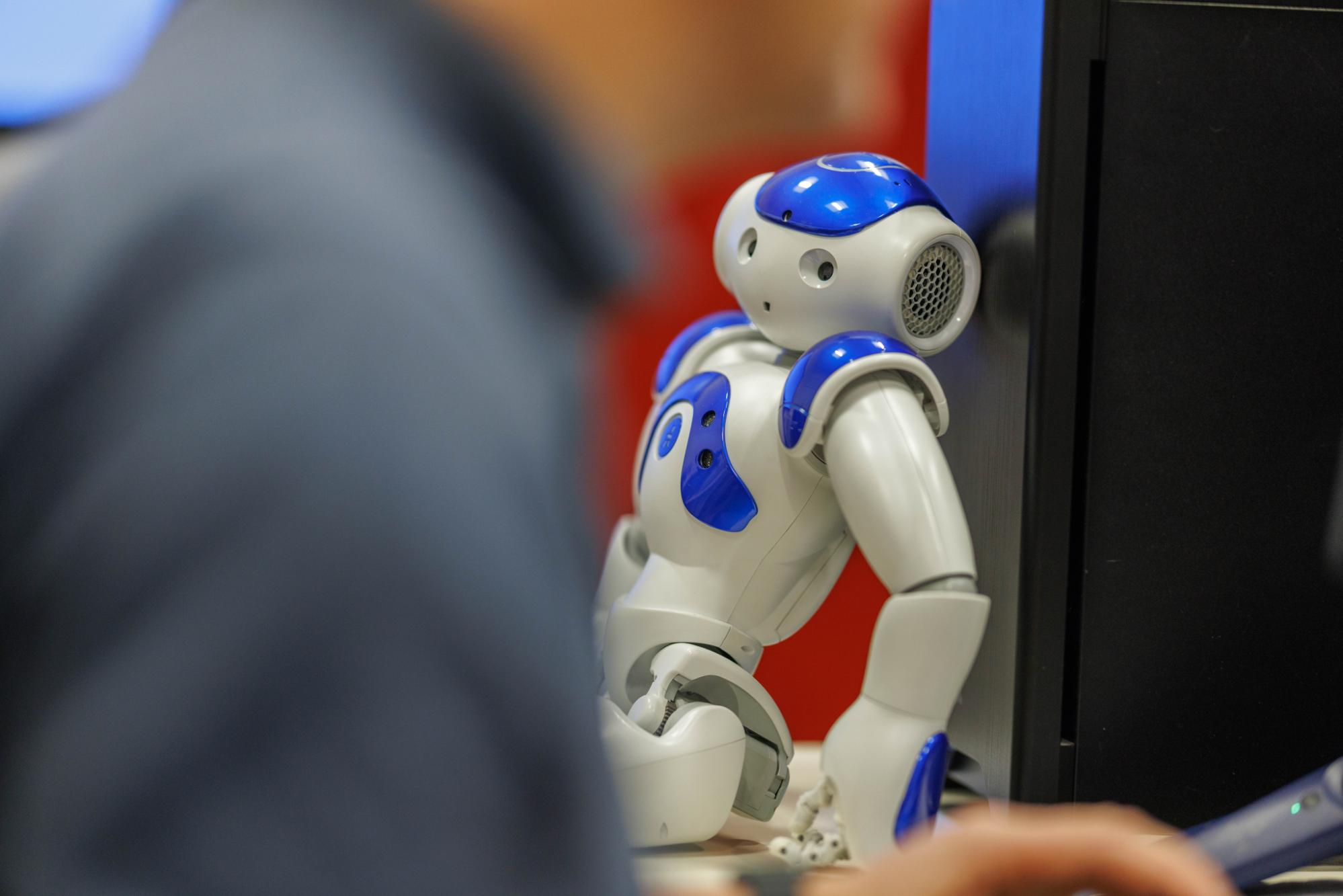Research Facilities
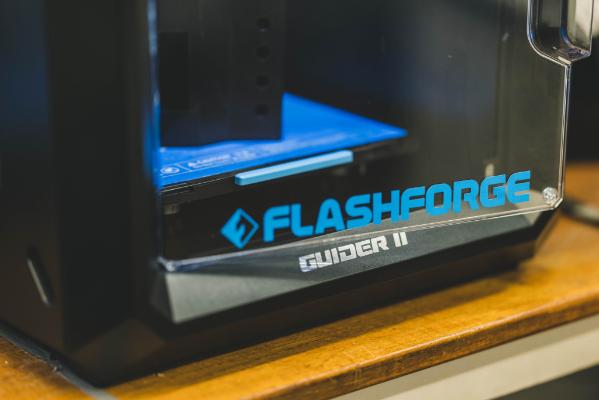
Our daily interactions with other people and groups are guided by various social signals including speech, body movements, facial expressions, and nonverbal vocalisations . The Social Interaction Lab analyses these signals and behaviours in both controlled environments and non-controlled social settings. Helped by the latest technologies we investigate empathy, gossip, laughter, facial expressions, interactions between groups, and human factors in cybersecurity. In the social interaction lab we not only focus on understanding the dynamics of social interactions, but also develop new statistical and experimental techniques for their study.
The SIL currently operates with the following equipment:
Microsoft Kinect
Oculus Rift headsets
VIVE Pro Eye Tracking
NAO Humanoid Robot
Motu M4 Audio
AKG professional headworn microphones
SSI (Social Signal Interpretation) synchronizing software
Video- and audio-editing software including Final Cut Pro
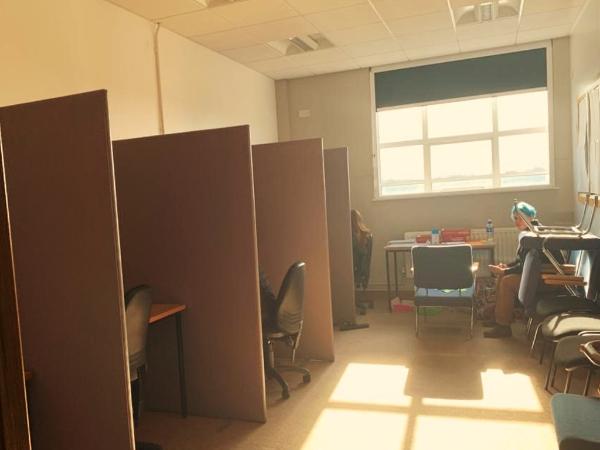
The Centre for Identity and Intergroup Relations Lab is a space devoted to support researchers in undertaking their projects. The Lab currently contains a suite of data collection computers, audio recording devices and standalone cameras for carrying out individual interviews, focus groups, surveys, and experimental interventions. Moreover, the Centre contains a focused collection library with classic and up-to-date relevant titles on intergroup contact, group processes, and social relations and dynamics.
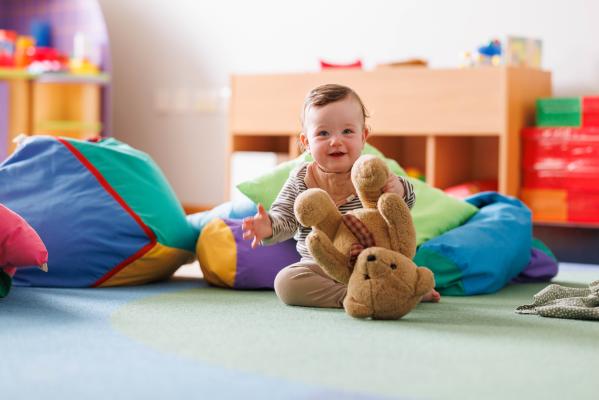
Our Child Development Lab provides a purpose-built flexible space for testing children of all ages.
The space is child friendly, and there is a separate waiting area for parents with children’s toilets and baby changing facilities. The facilities within the Lab include a large room with one-way mirror to allow viewing from an observation room, discreet built-in video cameras and play back system and a sound recording system.
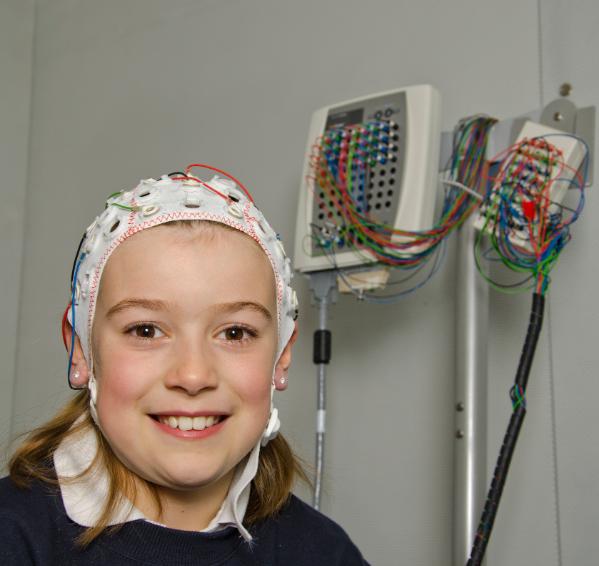
This lab includes EEG testing for children and full sound isolating booth.
Our Developmental EEG Laboratory within the David Keir Building houses a sound isolated booth with 64 channel EEG and customisable seating to accommodate testing from infancy to young adulthood. Facilities for high fidelity audio recording, playback and audiometric screening are available within the laboratory.
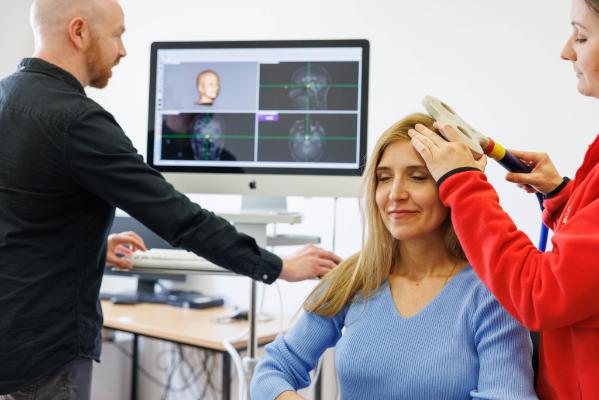
The Neuropsychology Lab is equipped with specialist equipment for recording and stimulating the intact human brain and muscles. Researchers using this facility specialise in combining Transcranial Magnetic Stimulation (TMS) with simultaneous recording of electrical brain activity with electroencephalography (EEG) for analysis of TMS-evoked potentials (TEPs), Event Related Potentials (ERPs), and time-frequency analyses (Eg. Beta Bursts). A BrainSight Neuronavigation system is used for brain mapping and optimal positioning of brain stimulation on the scalp. Custom-made Brain-Computer Interfaces (BCI) are used to train human participants to control on-screen computer games using brain activity in real-time, in order to study brain-behaviour relationships and improve rehabilitation of movement following brain injury. The lab also contains state-of-the-art wireless EEG technology (Emotiv and MindRove) for research on stroke rehabilitation at home, and wireless Electromyography (EMG) for recording the electrical activity of muscles.
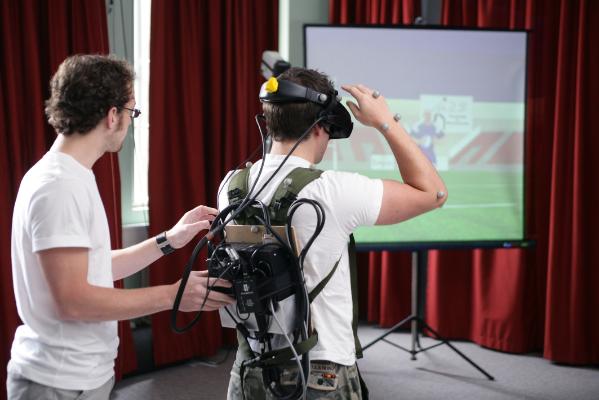
Our Science In Motion Lab (SIM) lab is a 6m x 23m multi-purpose, re-configurable lab space that houses a large range of state-of-the art movement science technologies, such as a flexible 20 camera Qualysis 3D motion tracking system, multiple virtual reality suites (Vive Pro [wireless], Oculus Rift – controlled through Unity), an Xsens motion tracking system, a large projection screen, and 2 AMTI force plates.
Within this lab we conduct both fundamental and applied research into human perception and action, and we contribute to applications of this research in real-life situations (e.g., development of cutting edge training and intervention programmes), as well as to a range of outreach activities.
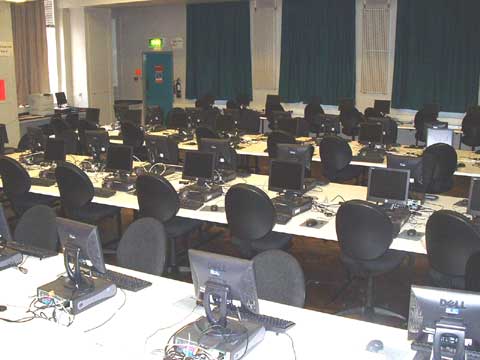
Some of our researchers contribute to the research conducted within QUB’s Pioneer Research Programme Intelligent Automated Manufacturing Systems (i-AMS), focusing on human-robot interactions and user interface testing.
The Centre has state-of-the-art advanced manufacturing technology demonstration facilities with a particular focus on machining, robotic welding, AR/VR and cooperative robotics, and is able to work across the full TRL spectrum. i-AMS has an ethos of industry collaboration and industry informed research, building on a 50 year track record of supporting industry in R&D and QUB’s position as the UK leader in knowledge transfer partnerships, and is keen to work with industry across all sectors to drive forward advanced manufacturing.
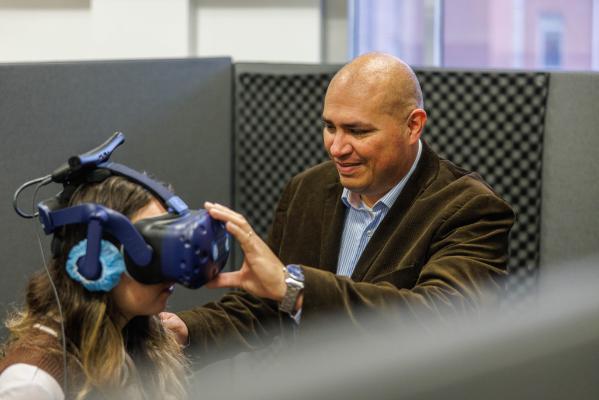
Human Experimental (HEX) Laboratory, housing both enclosed cubicles and less formally separated data collection stations all with fully updated computing facilities.
Exploring human behaviour
This lab houses both enclosed cubicles and less formally separated data collection stations all with fully updated computing facilities

Interract lab was established in July 2017, and it is based in the School of Psychology, where the Director Dr. Kostas A. Papageorgiou, is a Senior Lecturer (Associate Professor). Our work is interdisciplinary exploring personality and individual differences, with a particular focus on dark personality traits, their development, their assessment and their association with mental health, resilience and cognition across cultures. Among other novel findings, our work has focused on narcissism showing for the first time that this complex trait may act as a “bridge” between the prosocial and socially aversive side of human personality.
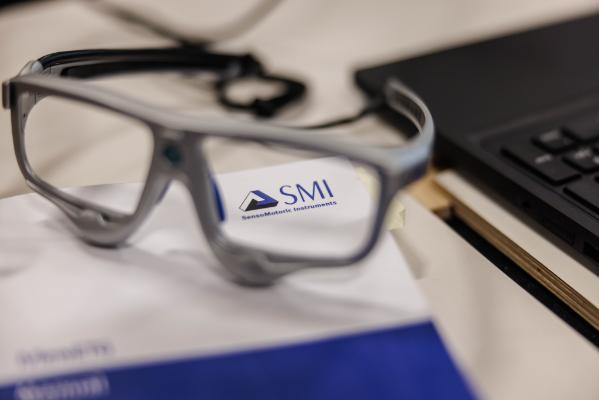
The School also has equipment for eye tracking (2 SMI portable eye trackers 125Hz, 250Hz; 60Hz SMI mobile eye tracking glasses; Eyelink 1000Hz eye tracker, VR-ready VIVE Pro Eye), electromyography (BIOPAC), and transcranial magnetic stimulation (TMS; MagStim) that are utilised across research themes. Additionally, it provides software to support research including School licenses for Pavlovia and Qualtrics as well as group licenses including NVivo, Comprehensive Meta-Analysis (CMA), E-Prime, MPlus and JBI Sumari.
We have four dedicated technical staff experienced in producing bespoke software, electronic, and mechanical research materials.

